Last updated on July 22nd, 2022 at 05:06 pm
Often romanticized as chivalrous, dangerous, gun-toting, horse-riding men, cowboys are popular motifs in pop culture. With their trademark hats, boots, bandanas, and gun holsters, they are portrayed as fighters who defend their towns from invaders and thugs.
A strong code of conduct and unbridled courage are often associated with cowboys, no matter what action movie you choose to watch.
The Western film genre prevalent in the late 19th and early 20th centuries made cowboys and The Old West or The Wild West popular symbols in American culture.
However, as entertaining and fueled with action as these movies are, they don’t accurately portray the life of an actual cowboy. A modern rodeo attendee may resemble a 19th-century cowboy more than their representations on film.
So, if you can’t depend on films and books that exaggerate and romanticize cowboys, how do you know what it was like to be a cowboy in the wild west? We’ve got it all covered!
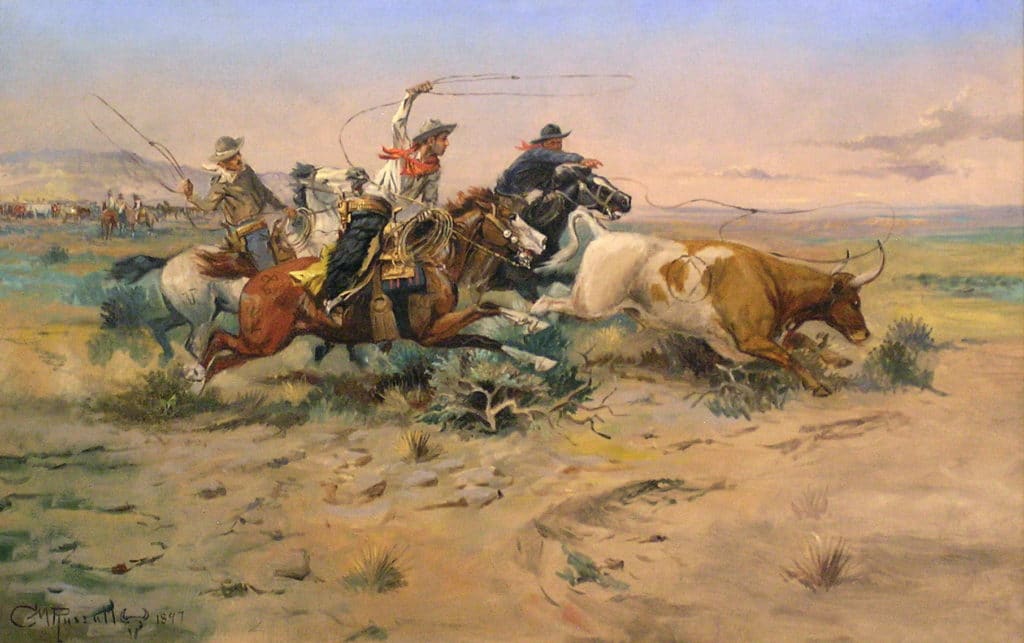
Cowboys: Where Did They Come From, Where Did They Go?
The English term “cowboy” loosely originates from “vaquero,” a Spanish word used to refer to individuals who tend to their cattle on horseback. Jonathan Swift used the term “cowboy” in print for the first time in 1725 to refer to young boys that tended to cows in the British Isles from 1820 to 1850.
Cowboy traditions and culture originated in Spain and gradually spread across the Iberian peninsula before reaching the Americas.
As Anglophone settlers and traders expanded towards the west, Spanish and English traditions began to mingle and merge. For example, new England merchants traveling to California by ship also encountered vaqueros on their journeys and traded their manufactured goods for tallow and hide produced in the cattle ranches.
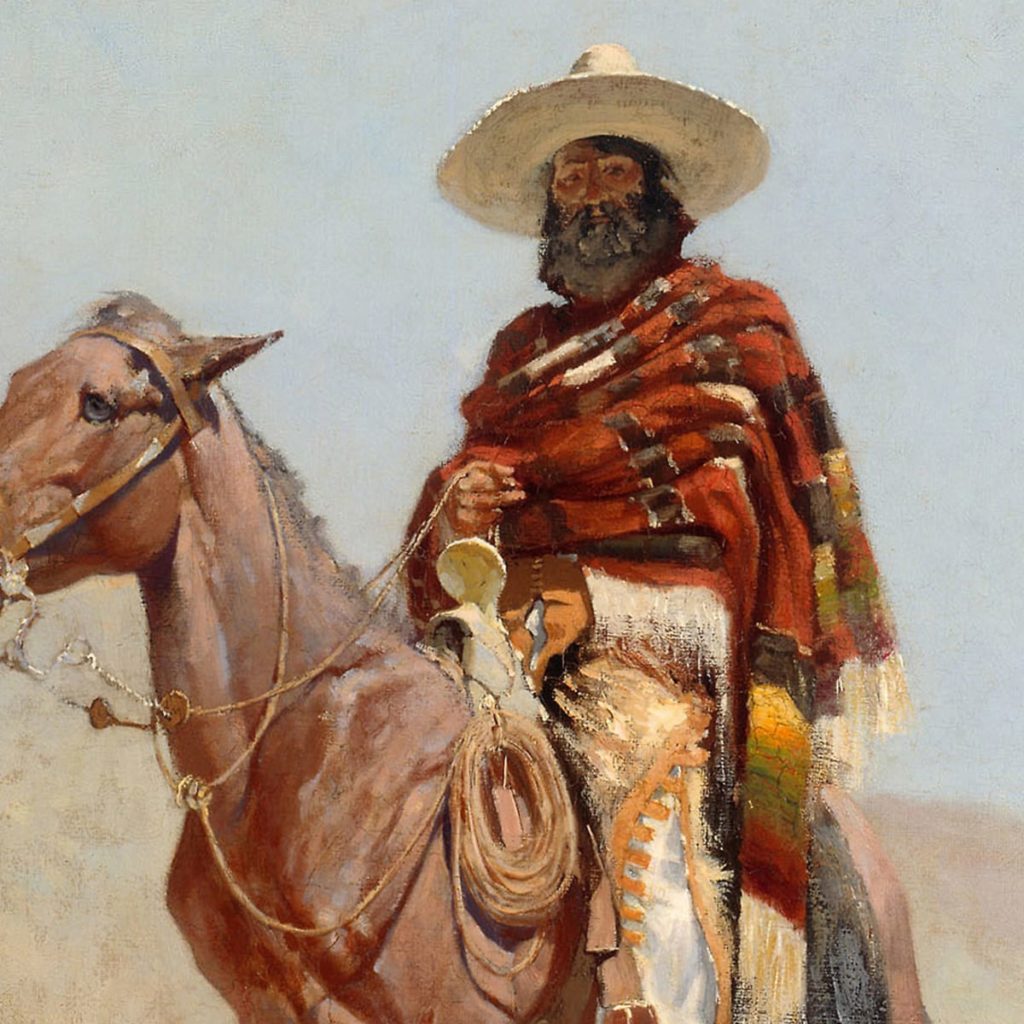
Thus, the merge of English and Spanish cultures began in the Texan region, and vaqueros became known as cowboys.
Cowboys often conducted Mustang runs, rounded up cattle, and performed cattle drives to transport cattle on trains and keep up with the growing demand for beef.
They were hardworking men from all walks of life, dedicated to caring for their herd.
In 1886-1887, the cattle industry collapsed as hundreds of thousands of cattle succumbed to the harsh winters. While this transformed their lifestyle and decreased their numbers, cowboys still exist today.
They may not fit the pop culture definition or aesthetic, but ranches and ranch workers are like modern-day cowboys. They often use vehicles instead of horses but are still expert horsemen. Most of them can be found in the Cowboy States of Texas, Montana, Utah, Colorado, Arizona, Wyoming, North and South Dakota, and Florida.
What Did the Cowboys Do? Cowboy Duties in the Wild West
Cowboys were responsible for keeping livestock well-fed and branding and earmarking cattle. They were also required to tend to any injuries and other needs.
Essentially, they were responsible for cattle and livestock’s overall well-being and health under their charge. They were also responsible for “strings,” or small groups of horses that helped them perform their duties.
Cowboys also patrolled their range to check for any damaged fencing that needed repairs, potential predators, water issues, or other problems that could affect their cattle or horses.
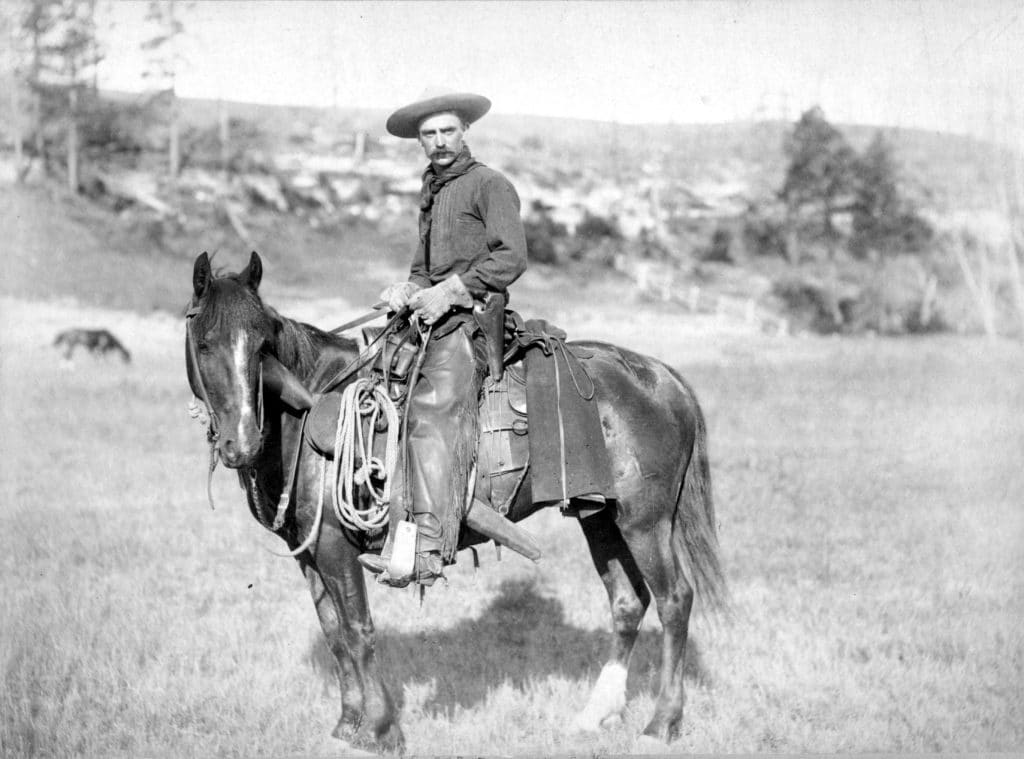
Depending on the size of the ranch, cowboys could have additional responsibilities beyond caring for the livestock or cattle. They were required to do other general tasks as well.
The main tasks that specialized cowboys performed concerning cattle and horses were:
- Mustang running
- Roundups
- Cattle drives
Mustang Running
Mustang running refers to cowboys who caught, broke, and drove mustangs to the market in Mexico and other territories that are now known as Northern Mexico, New Mexico, Texas, and California.
Roundups
The cattle grazed on open plains during the majority of the year, but each spring and fall, they were rounded up by cowboys from different ranches. Cattle were separated according to the ranches they belonged to, and new calves were branded. Steers between the age of three and four years were driven to the market.
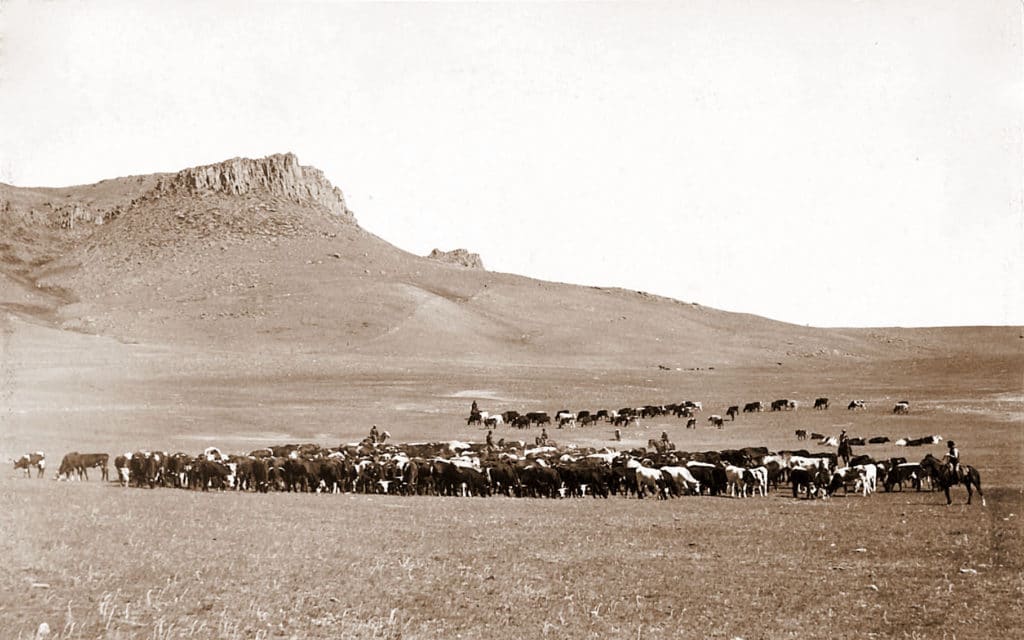
Roundups were primarily performed to brand cattle and send steers to the market. However, they also helped cowboys regroup cattle that belonged to their ranch to keep track of them.
Cattle Drives
Cattle drives were among the main duties of cowboys in the wild west. They moved herds of cattle from one place to another, often for grazing. However, cattle drives were also used to transport cattle by train as the demand for beef increased.
Cowboy Attire and Tools
Cowboys lived a grueling, busy life. As a result, most of their attire depended on functionality and practicality rather than observing fashion trends and making style statements.
A typical outfit consisted of the following:
Bandana – the large cotton handkerchief was used to protect the face from dust storms and to clean the sweat off the face. Both are essential for desert weather and sandstorms.
Chaps – they helped to protect the rider’s legs when riding horses during rough work or through dense bushes.
Cowboy hats – these were high crowned with a wider brim to protect the cowboy from the sun’s glare, overhanging bushes, and other elements. Though they’re fashion statements now, cowboy hats were a necessity back then.
Cowboy boots – cowboy boots had high tops, pointed toes, and high heels. Boots helped protect the legs, allowed cowboys to guide their feet into stirrups, and prevented their feet from slipping through them.
Jeans and other well-fitting trousers made with sturdy materials such as denim and canvas – these helped protect the legs without snagging on equipment, bushes, and other hazards. They were also designed with a smooth inner seam to prevent blisters from developing along the inner thighs and knees.
Gloves – typically made from deerskin and other flexible, soft leather gloves protected the hands as cowboys worked with barbed wire, cleared bushes, and worked with tools.
Though staples in cowboy attire, all of these elements varied across regions.
Cowboys also depended on a variety of tools to perform their tasks:
Firearms – protected predators and wild animals, they were also used for market-hunting.
Knives – cowboys often carried handy pocket knives, which were useful on many occasions.
Spurs – attached to the boot’s heels, spurs are metal devices that provide the rider with a more precise and stronger leg cue.
Lariat – also known as a lasso, the lariat is a stiff rope made from leather or rawhide, tightly twisted with a small hoop at one end. It is used to catch animals.
Much of the attire, tools, and work of cowboys varied across territories, though they were largely focused on basic aspects of cattle and ranch management.
Cowboys In Different Territories
Climate and geography led to varied cattle handling methods and equipment variations in different areas of the Wild West.
The main areas with unique traditions are the current regions of Texas and California. In addition, Hawaii, Virginia, and Florida have relatively lesser-known but equally distinct traditions, though all tend to overlap and merge to some extent.
Texas Cowboys
During the 18th century, Texan cowboys would herd cattle and sell them legally and illegally in Louisiana.
Strongly influenced by the vaquero culture, Texan cowboys adopted some Spanish/Mexican attire and vocabulary while retaining their livestock-handling traditions and the Eastern US and Great Britain culture.
This resulted in a blend of cultural influences and adaptation to different traditions and practices.
Californian Buckaroos
Californian cowboys were dubbed “buckaroos” by Anglophone settlers, a term that continues to be used today.
Most California settlers were miners, and the livestock duties were generally left to the Spanish and Mexican vaqueros who remained in California.
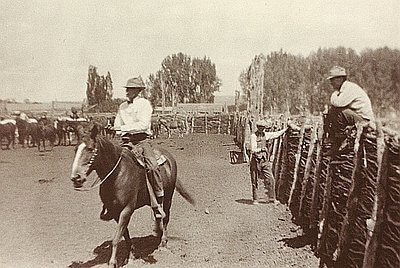
The Californian cowboys were highly skilled and remained on the ranch they were born or brought up in. They also raised their families on these ranches.
Due to the geographical and climate difference between Texas and California, the cattle in the latter region could enjoy intensive grazing with less open range. They were regionally marketed and did not need to be driven across large distances to the railroads.
Cowhunters of Florida
Cowhunters or the cracker cowboys of Florida mainly used bullwhips and dogs to capture and herd cattle. They also used McClellan saddles and sometimes wore brogans. Brogans were heavy ankle boots that were worn in addition to traditional high-kneed cowboy boots as protection against snakes. They also wore straw hats, ponchos, and inexpensive wool.
Virginia Salt Water Cowboys
“Salt Water Cowboys” mainly settled along the eastern shores of Virginia and rounded up feral Chincoteague Ponies.
Hawaiian Paniolos
Hawaiian cowboys, known as “paniolos,” were direct descendants of the California and Mexican vaqueros.
Their ranching style typically included the capture and taming of wild cattle, which was accomplished by driving cattle into large pits that were dug into the forest floors.
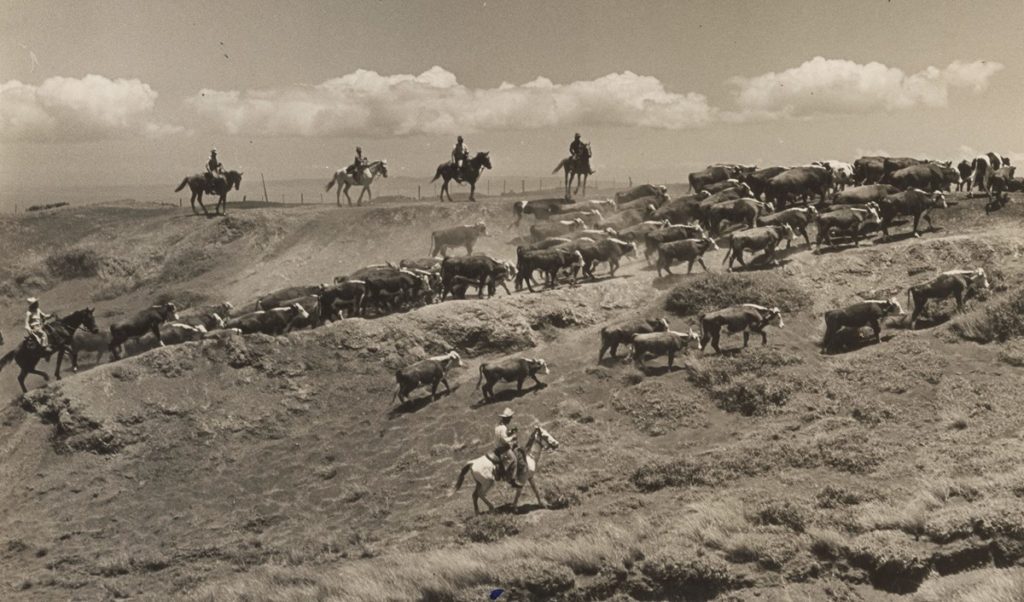
Other Cowboy Regions
Cowboys are also common outside the United States, though relatively less popular.
Canadian ranches are most common in the Alberta province.
Aside from North America, ranching is popular in Paraguay, Uruguay, Argentina, Peru, Chile, and Australia.
What Was It Like To Be a Cowboy?
Being a cowboy wasn’t as glamorous and fun as movies made them out to be. On the contrary, it was a hard life with little sleep and a lot of work. Their clothing was practical, their work was grueling, and they were at the lower rung of the social hierarchy.
However, cowboys enjoyed diversity and were friendly and warm with each other. Their pay wasn’t based on race, color, or ethnicity though they did tend to lead lonely lives with their horses as best friends.
Cowboys also had their own language, often consisting of task-specific phrases and a lot of cursing. They also had a lot of slang and metaphors as part of their unique dialect.
Life of a Cowboy
Strength, intelligence, and courage were essential aspects of being a cowboy — all things that Western movies got right in their portrayal. They earned well, but lived difficult lives, and moved around a lot.
Though cowboys remain popular today, cowgirls have little documented history and have remained somewhat of an enigma.
However, considering the amount of ranch work women are involved in today, it’s safe to say that cowgirls were also prevalent when the cowboys roamed the Wild West.
Cowboys have an exciting history as well as a rich culture and heritage. Imagining what it was like to be a cowboy in the Wild West leaves a lot of room for the imagination.
But now that you have a fair idea of what their lives were like from their clothes, tools, and responsibilities, you can envision their lives in greater detail and more accurately!

